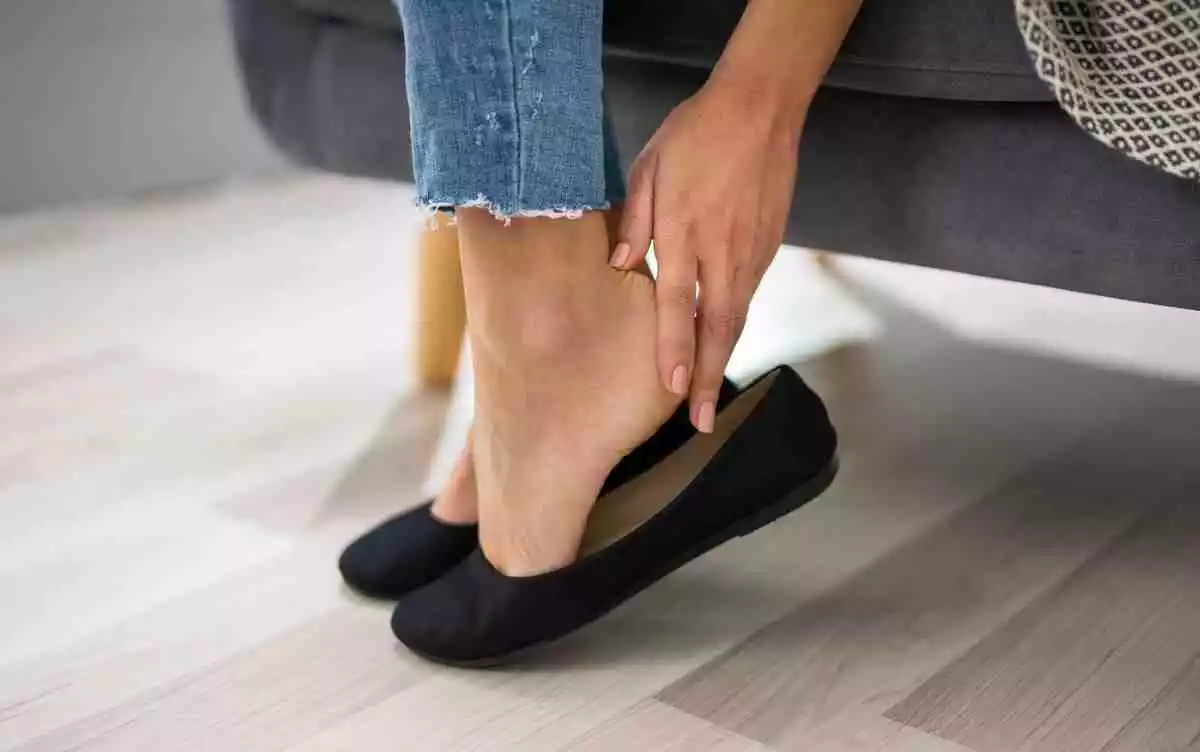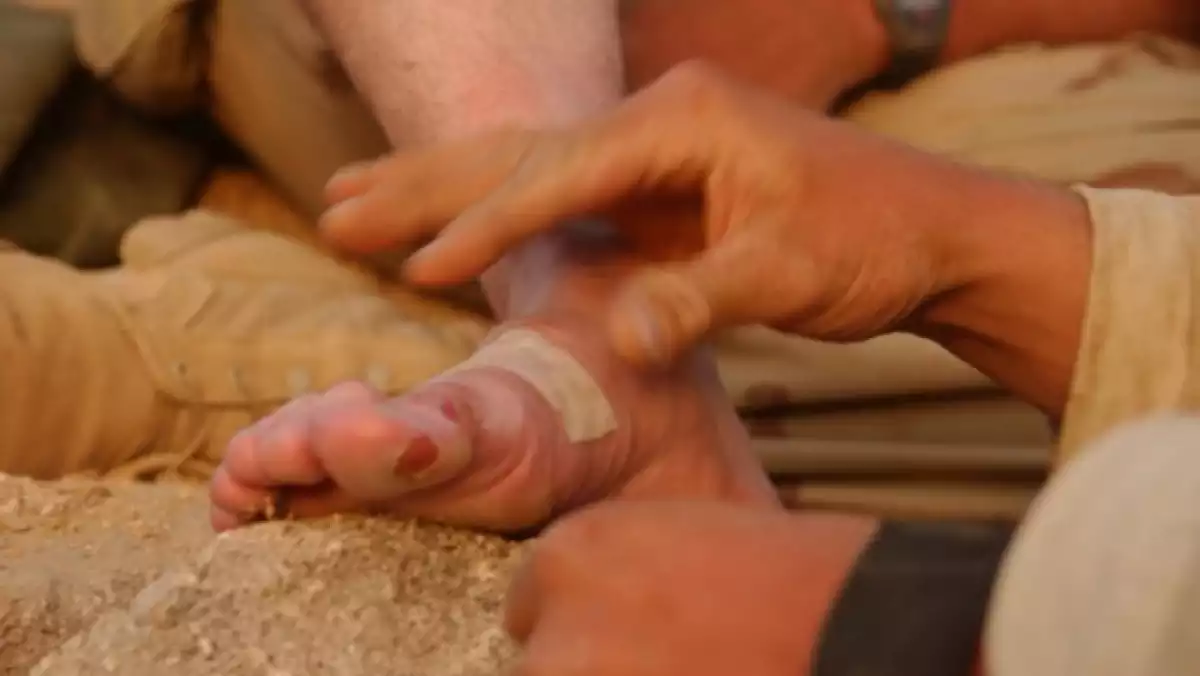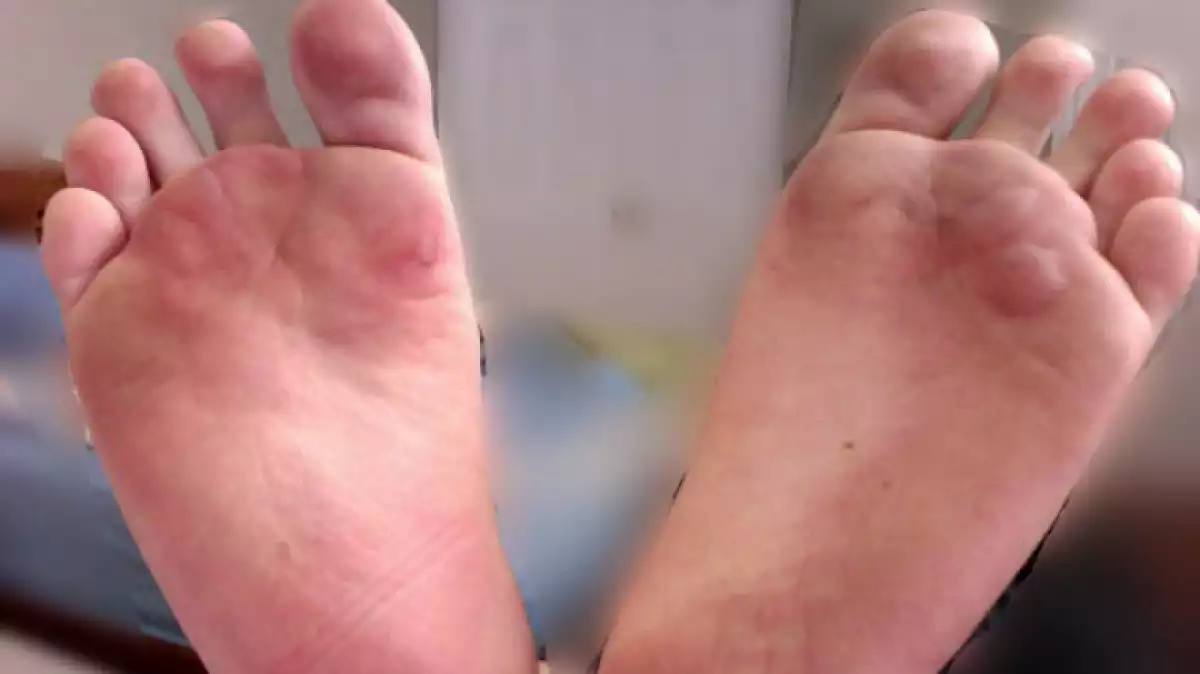
A blister is a fluid-filled pouch that develops in the thickest, outer layer of the skin in response to injury or infection. Blisters often appear over areas that have suffered damage to protect them from further harm.
Blisters usually develop on the hands and feet, especially on the feet, as it is an area where many nerves and blood vessels meet and are often exposed to chafe throughout the day. These feared blisters on feet can be especially painful and depending on where they are located they can cause difficulty to walk.
In this article, you will find out how to prevent and treat blisters on your feet and hands and why they appear. We will also tell you what dyshidrosis is and how to differentiate it.
What are blisters?
A blister is a small bag of fluid that forms in an area of the body. They can vary in size and often occur from different causes. For example, they may develop after a skin burn, infection with fungi or bacteria, bug bites, bumps, or scratches.
Depending on its location, a blister can interfere with our day-to-day tasks. For example, if we have one on our feet we may have difficulty walking, exercising or standing for a long period of time.
Blisters on feet are the most common ones. Fortunately, there are some home treatments that can alleviate our discomfort and decrease the risk of suffering them.
What causes blisters?
If we have blisters on our feet, friction and chafes may be the cause. Walking or standing for several hours a day puts pressure on the heels, soles, and toes of this part of the body. The more time we spend standing during the day, the greater the risk of these vesicles.
However, not everyone who walks or stands for long periods of time develops blisters. In many cases, they are the result of poorly fitted, too tight, or too loose shoes that can cause chafing of the skin. This causes friction and, as a result, fluid collects under the outer layer of the skin.
Moisture or excessive sweating can also trigger these vesicles. This is common for athletes, especially runners, during spring and summer. Small blisters form when sweat clogs the pores of the feet.
They can also develop after a sunburn. Moreover, other possible causes of blisters on the feet are:
- Freezing
- Allergic reaction
- Chemical exposure (cosmetics or detergents)
- Fungal infections
- Chickenpox
- Bacterial infection
- Herpes
- Dyshidrotic eczema

Dyshidrosis and its relationship with blisters
It is important to know how to differentiate the blisters that appear for some of the reasons mentioned above, from those that appear for dyshidrosis. This disease, also known as dyshidrotic eczema, is a condition characterized by the appearance of blisters on hands and feet. These usually produce intense itching.
This is a noncommunicable disease, often chronic, which presents episodes of manifestation and other regression of a seasonal nature, most often during spring and summer.
This condition originates inside the body, although many times it seems to be related to external factors such as stress or allergic diseases, such as atopic dermatitis.
It is not yet known exactly why it manifests itself and, although at first it was believed to be related to sweat, it has finally discarded this theory. However, it is known that there are different factors that lead to this disease, such as:
- Having atopic dermatitis or other allergic diseases such as asthma or rhinitis.
- Having allergies to different substances.
- Emotional stress.
- Having an infection caused by bacteria or fungi on the skin.
- In some cases, pregnancy can be a trigger because of hormonal changes.
Diagnose
A blister on feet caused by a chafe usually heals in a few days with home treatments. Unfortunately, some blisters do not respond to these treatments and get worse over time.
A doctor should be consulted if the blister causes severe pain or prevents us from walking or if we have fever, nausea or chills; this may be a sign of infection.
In these cases, the blister is usually drained with a sterile needle. If there are signs of infection, a sample of fluid may be examined to determine the cause. Moreover, we will be prescribed topical or oral antibiotics to treat the existing infection and prevent an additional infection from occurring.
If they turn yellow, green, or purple, it is often a symbol that they have become infected and require medical attention. They can also be a symptom of more serious underlying health conditions, such as herpes.
Every time a blister becomes discolored, extremely inflamed, worsens or does not heal after a few days, you should see a doctor.

Home remedies for blisters
Although we may be tempted to pop a blister, we must leave it intact, as an open one can become infected. We can cover it with a Band-Aid to help protect it while it heals.
After a few days, the blister will harden and disappear. However, until this happens, it may be uncomfortable, depending on its size.
While we shouldn't pop it, draining it safely can provide some relief. To properly drain the blister at home, we must:
- Wash our hands with warm water and antibacterial soap.
- Disinfect a needle with alcohol using a cotton swab.
- Clean the blister with antiseptic.
- With the needle, make a small prick in the blister
- Allow the liquid to drain completely.
- Apply antibacterial cream.
- Cover with a bandage or gauze.
After this process, it is important to clean and reapply the ointment or antibacterial daily. Also, we need to keep the blister covered until it heals.
How to prevent blisters on feet
Preventing foot blisters involves addressing the underlying cause. If we develop them due to friction, we must wear shoes that properly fit our foot. If they cause uncomfortableness on a specific part of the feet, we should use an insole that provides additional padding and reduces chafing.
If we are athletes, we must make sure to keep our feet dry. We need to apply powders to reduce sweating or wear moisture-absorbing socks designed specifically for athletes. These socks dry faster and reduce moisture.
If a cosmetic product (powder, lotion, soap) or an allergen causes blisters on our feet, avoiding the product reduces the likelihood of new ones.
For blisters caused by a medical condition, we must go to the doctor and apply the treatment they prescript.
Therefore, it is necessary to identify the cause of the blister in order to prevent it from appearing in the future. If we know beforehand that we are going to make a long excursion and that it is possible that we may get blisters, we can go prepared for if we have to drain them.
- This article about "Blisters" was originally published in Spanish in Onda Salud
References
Knapik, J. J., Reynolds, K. L., Duplantis, K. L., & Jones, B. H. (1995). Friction blisters. Sports Medicine, 20(3), 136-147.
McAlvage, E. M. (1981). U.S. Patent No. 4,261,061. Washington, DC: U.S. Patent and Trademark Office.
Ramsey, M. L. (1992). Managing friction blisters of the feet. The Physician and sports medicine, 20(1), 116-124.

